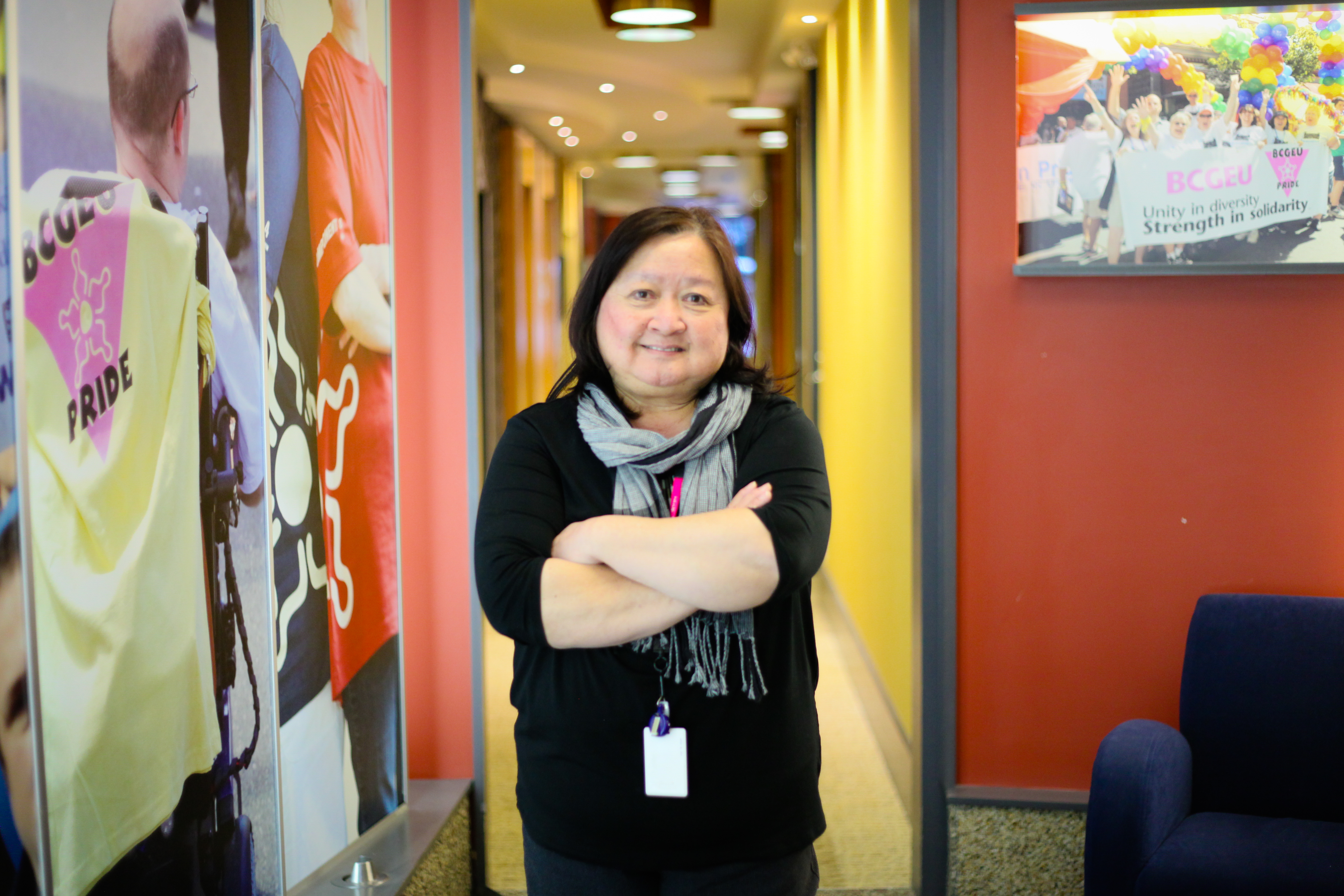At a Kelowna seniors’ care home, residents ring the bell in their rooms for assistance — to go to the bathroom, to get out of bed, or deal with pain or confusion.
And often they ring, and ring, and ring.
Wendy Mah worked as a rehabilitation assistant in the home. She recalls dealing with an angry woman who had spent 30 minutes ringing the bell trying to get someone to help her husband to the bathroom before he soiled his bed.
There was no one.
“The care aide was dealing with a crisis in another room,” Mah says, and there was no other care aide available at Three Links Manor to help.
Mah’s experience isn’t unique. A 2014 survey by the Hospital Employees’ Union found more than half of care aides said they didn’t have the time in a typical shift to properly meet all the needs of their residents.
And seniors’ advocates say publicly funded care homes across the province are struggling to meet the needs of the ballooning seniors’ population. Less than 10 per cent of the 292 publicly funded care homes listed in the B.C. Seniors’ Advocate Quick Facts Directory provide residents with the government’s benchmark of 3.36 hours of daily direct care.
Three Links Manor is among the 41 per cent of care homes that provide enough care staff to meet the baseline standard of 3.15 hours, according to the directory.
But even in a facility whose staffing meets the baseline residents can suffer too-long waits for attention, says Mah, who is on a six-month leave from the home to work for the BC Government and Service Employees’ Union. Mah says understaffing — particularly among care aides who work directly with residents — continue to be a problem across the system.
Staffing levels haven’t kept pace as the needs of residents have become more complex, with many suffering from dementia or multiple health conditions.
Another problem, Mah says, is that many care homes count registered nurses hours in determining their staff to patient ratios — nurses whose duties are largely administrative and don’t contribute to direct care.
“They don’t answer bells unless it’s serious,” she says.
Interior Health, which oversees Three Links Manor, says managing the diverse needs of residents — from those who stay in care for years to those who only need short-term palliative care — is challenging. But individual residents are getting the appropriate amount of care they need, the health authority says.
Executive director of residential services Cindy Kozak-Campbell says measures include clustering more complex patients at facilities with higher staffing levels. Care homes can also request added funding to boost staffing in periods when they have residents that require additional care.
But advocates are calling the situation in B.C. care homes a crisis. Inadequate staffing leaves seniors without someone to hold their hand or provide support when they’re struggling with physical or emotional distress, while workers feel overwhelmed and burnt out.
“For many seniors in long-term care, the relationship they have with their care aide will be the last significant relationship they have in their life,” Jennifer Whiteside, spokeswoman for the Hospital Employees’ Union, which represents about 20,000 people working in seniors’ care.
Yet the HEU’s 2014 survey of care aides found a majority of them felt they didn’t have enough time to meet the needs of their residents.
Whiteside says 70 per cent of those surveyed also said they didn’t have time to provide comfort to seniors who were feeling confused, agitated or afraid.
Gillian Valentine, a care aide for a facility in North Vancouver, says the situation can be heartbreaking for workers who entered the field imagining they would have the time to talk to people, give them a sense of dignity and help them feel less alone.
“No one goes home feeling they did a good job,” she says. “Obviously you still care, you still have empathy, but over time you need to shut that down a little bit or it would never be off your mind.”
‘A national shame’
Staffing shortages bring other risks.
“Long-term care is one of the most dangerous working environments in the province,” says Whiteside. The injury rates for workers are twice as high as for workers in other health care facilities and three times the rate for all workers, according to WorkSafeBC statistics.
And staffing levels affect the health and safety of residents. A report by the Office of the Seniors’ Advocate found there were 3,046 reported incidents of residents falling and injuring themselves at care facilities in 2015-2016, up 29 per cent from the previous year. Cases of wandering or missing residents and of abuse or neglect had also increased.
“The state of seniors’ care in B.C. is a national shame,” says NDP health critic Judy Darcy. “This is something that needed to be planned for. It hasn’t been, it’s now at a crisis point with all signs of getting worse unless action is taken.”
The B.C. Ministry of Health says it shares a common vision with seniors’ advocates and is continually working to improve seniors’ care. In a statement, the ministry says spending for home and community care increased by $1.3 billion, or 55 per cent, from 2001 to 2016, and overall health care spending is set to increase by $1.5 billion over the next five years.
The ministry also says the reports on hours of care per resident don’t provide a clear picture of what is happening in care homes. The ministry says the reported hours are averages and people get more or less care depending on their needs.
“The goal is always to ensure that care is provided at whatever level is most appropriate for an individual resident,” the statement says.
But critics say the system is failing seniors and that government policies that have increased privatization and allowed sub-contracting and contract flipping are to blame. The government has failed to enforce its on standards on staffing and care, they say.
There are over 27,000 publicly funded residential care beds located in either publicly- or privately-operated facilities across the province, according to data from the Seniors’ Advocate. Of the 292 facilities listed in the advocate’s directory, 110 are run by health authorities, five by Providence Health, and the remainder are a mix of non-profit and for-profit operators.
The Hospital Employees Union says the number of private, for-profit long-term care homes contracted by the province has increased by 42 per cent since 2000. Private operators are allowed to sub-contract services — including care aide staffing — to other providers.
“There is this real race to bottom where contractors are trying to outbid each other on the low end to save a few dollars,” Whiteside says.
The result is a push to drive down wages and eliminate benefits for workers. “We tend to see anywhere from a 20 per cent difference between what a care aid would earn under the public sector... and a care aid working in a private care facility,” Whiteside says.
It’s also resulting in high staff turnover, decreased job security and massive layoffs when contracts are flipped between providers. Whiteside says the sale of a Nanaimo facility last year resulted in service sub-contracts to flip three times — bringing in a new workforce on each occasion — within a six-week period.
“Could you imagine being a senior who is subject to that lack of continuity in care?” she says.
The instability can also lead staff to keep quiet about problems, fearing they’ll be fired if they complain.
“When you have a family-supporting job, you don’t want to see that put at risk especially in areas where the health authority is the largest employer. People are reluctant to whistle blow,” says Stephanie Smith, president of the BCGEU.
An election issue
Advocates say they want higher standards and more stability in the long-term care system. Both the HEU and BCGEU have ongoing campaigns calling for better seniors’ care, and they say they intend to make this an election issue.
Smith says the BCGEU wants more funding for the sector and updated regulations around staffing levels that take into account the more complex physical and mental health problems of seniors.
While the NDP hasn’t yet announced campaign promises, the party has called for better enforcement of standards for direct care hours and greater assurance that public funding to care homes is going into frontline care, rather than profits or administration.
Darcy says care homes should ideally be operated as non-profits. But with so many facilities now privatized, it’s not easy to switch back to a non-profit model, she said. Darcy says the party is looking into policy measures that would restore successorship for contracted services to prevent contract flipping and reduce layoffs.
The BC Care Providers Association is calling for the government to spend an additional $230 million per year to increase direct care hours to meet the provincial benchmark of 3.36 hours per day per resident.
It also wants the government to create a $25-million fund to address labour shortages and increase training and resources for staff.
The health ministry said in a statement that the province has funded more spaces in post-secondary education for programs related to health care to help boost the workforce.
The government says parliamentary secretary for seniors Darryl Plecas is working on a report about seniors’ care that takes into account concerns about staffing and care hours. The report is expected to be released “soon.” ![]()
Read more: Health, BC Election 2017

















Tyee Commenting Guidelines
Comments that violate guidelines risk being deleted, and violations may result in a temporary or permanent user ban. Maintain the spirit of good conversation to stay in the discussion.
*Please note The Tyee is not a forum for spreading misinformation about COVID-19, denying its existence or minimizing its risk to public health.
Do:
Do not: